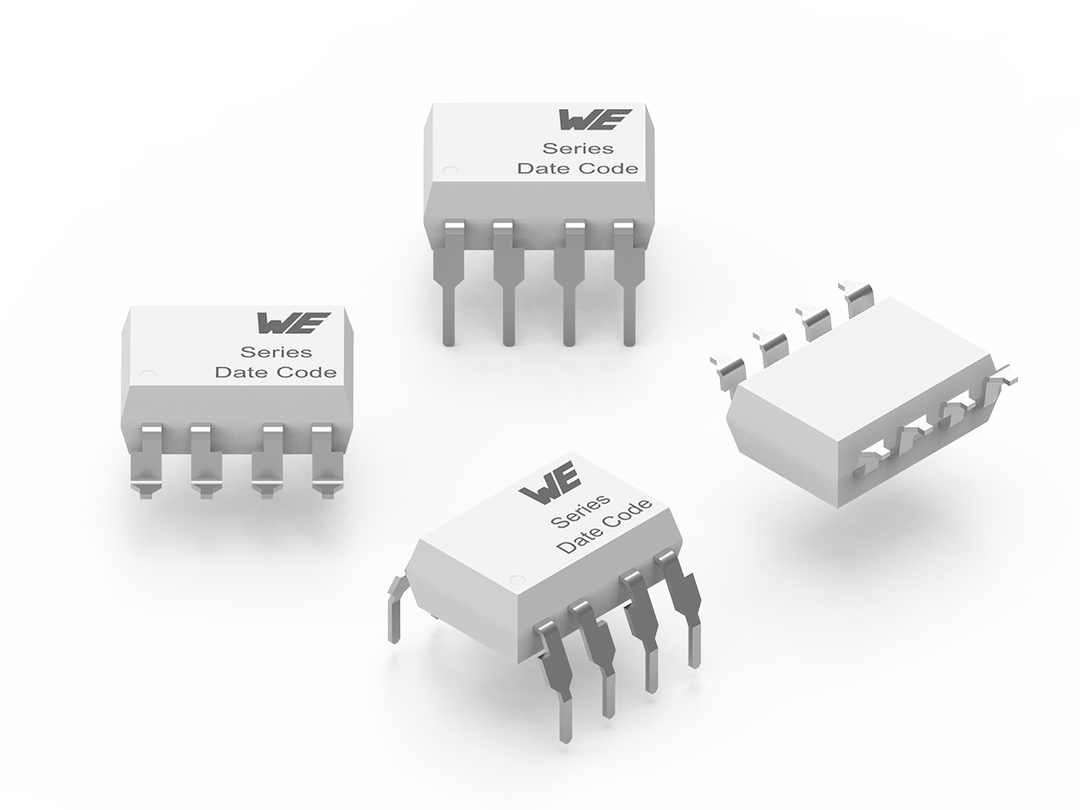An optocoupler, also known as photo-coupler or opto-isolator, is a component which can transfer an electrical signal across two galvanically¬-isolated circuits by means of optical coupling. They offer high isolation ratings (5 kV) in a very compact form-factor and, unlike transformers and capacitors which can only transfer AC signals, optocouplers can transfer both AC and DC signals alike. This makes them very popular in applications like isolated communication interfaces, high-voltage motor drives, AC-mains monitoring, control-loop of power supplies, industrial I/O modules and sensor systems, amongst others.
In order to design a reliable application with optocouplers, it is important to understand and consider not only its main parameters, but also its parasitic elements as well as their tolerances, variations and interdependencies. Starting right from the basics, this application note dives into the topic providing extensive experimental results with Würth Elektronik’s WL-OCPT 816-817 optocoupler devices. In addition, guidance for parameter characterization and important design considerations are also given. The ANO007 will provide designers with the insights and foundational knowledge required to design functionally-robust optocoupler applications.
Main topics:
Download: ANO007
